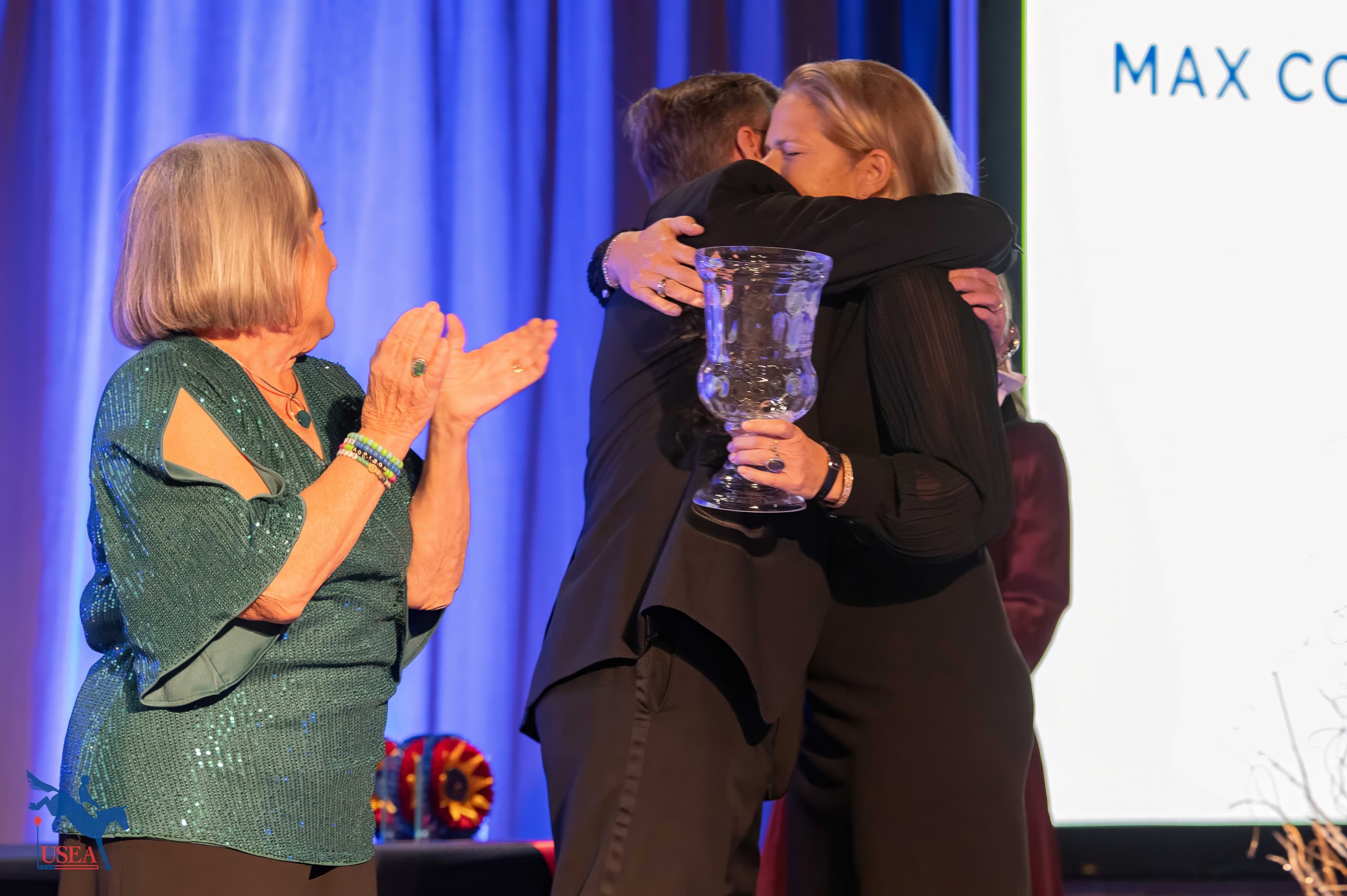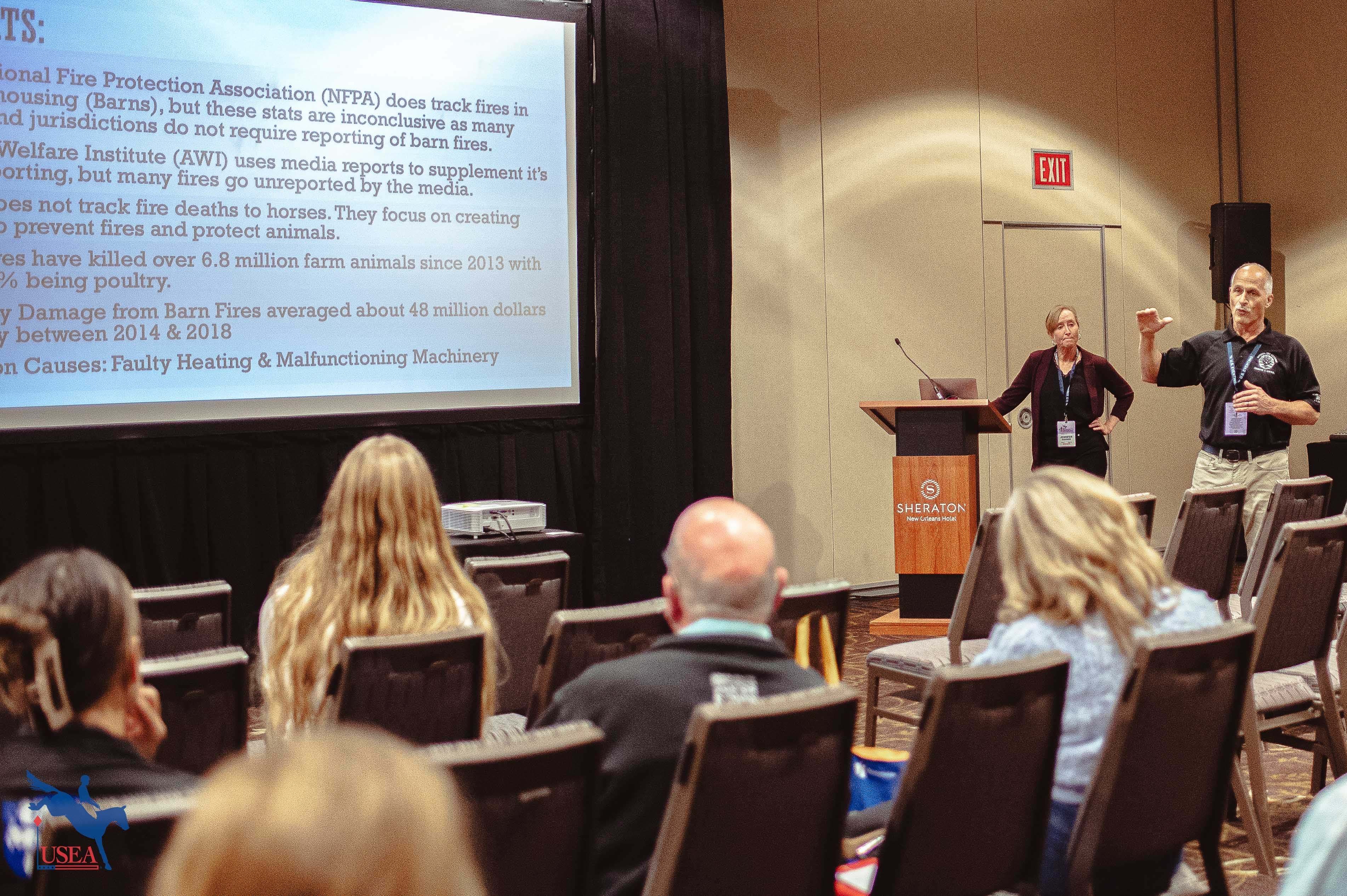Key Steps to Safe Cross-Country Riding, Part Two: Horse and Rider Contract and Going Faster
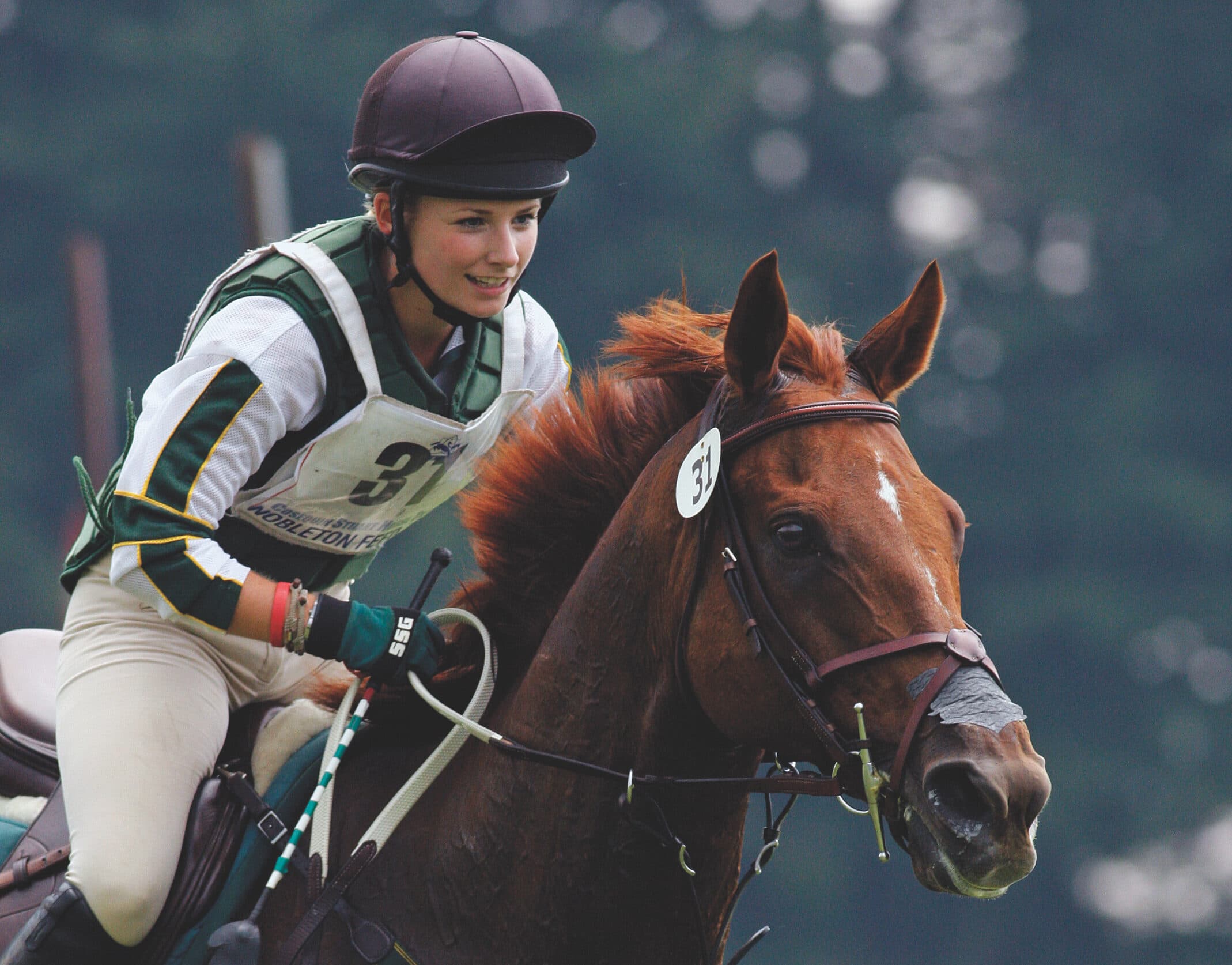
This article was originally published in volume 37, issue 5 of Eventing USA magazine and is the second in a four-part series geared toward making cross-country riding safer written by renowned horseman, William Micklem. Click to read part one.
Any riding exercise is about the art of the possible. This is especially true with jumping exercises when a step too far will compromise safety. Exercises and a method should be developed progressively that build confidence and competence for both horse and rider, and in particular also allows room for error.
When Cross-Country is Like Steeplechasing
The fundamental pre-requisite for ‘fifth leg training’, which encourages the horse to find an extra leg in times of difficulty, is that the horse should be in self-carriage, which of course is also a fundamental aim of dressage riding. Many people say this is impossible when you are galloping down to a fence on a cross-country course. But look at top class steeplechasers and their riders. In particular look at steeplechase horses jumping after they have dislodged their riders, or at a horse loose schooling. These horses all jump much better when they have to take responsibility for the jump and for their own self-preservation.
In addition, look at cross-country film of Mark Todd, Ginny Leng, Mary King, and Andrew Nicholson, who all allow their horses to work for them by using a soft rein contact. In these examples, they do not try to use the rein contact as a support point but instead it is simply a communication point. Of course, this doesn’t happen overnight and it doesn’t start on the cross-country course. This work starts in the dressage arena and continues in the show jumping arena and out hacking and is an ongoing process that is vital preparation for safe cross-country riding.
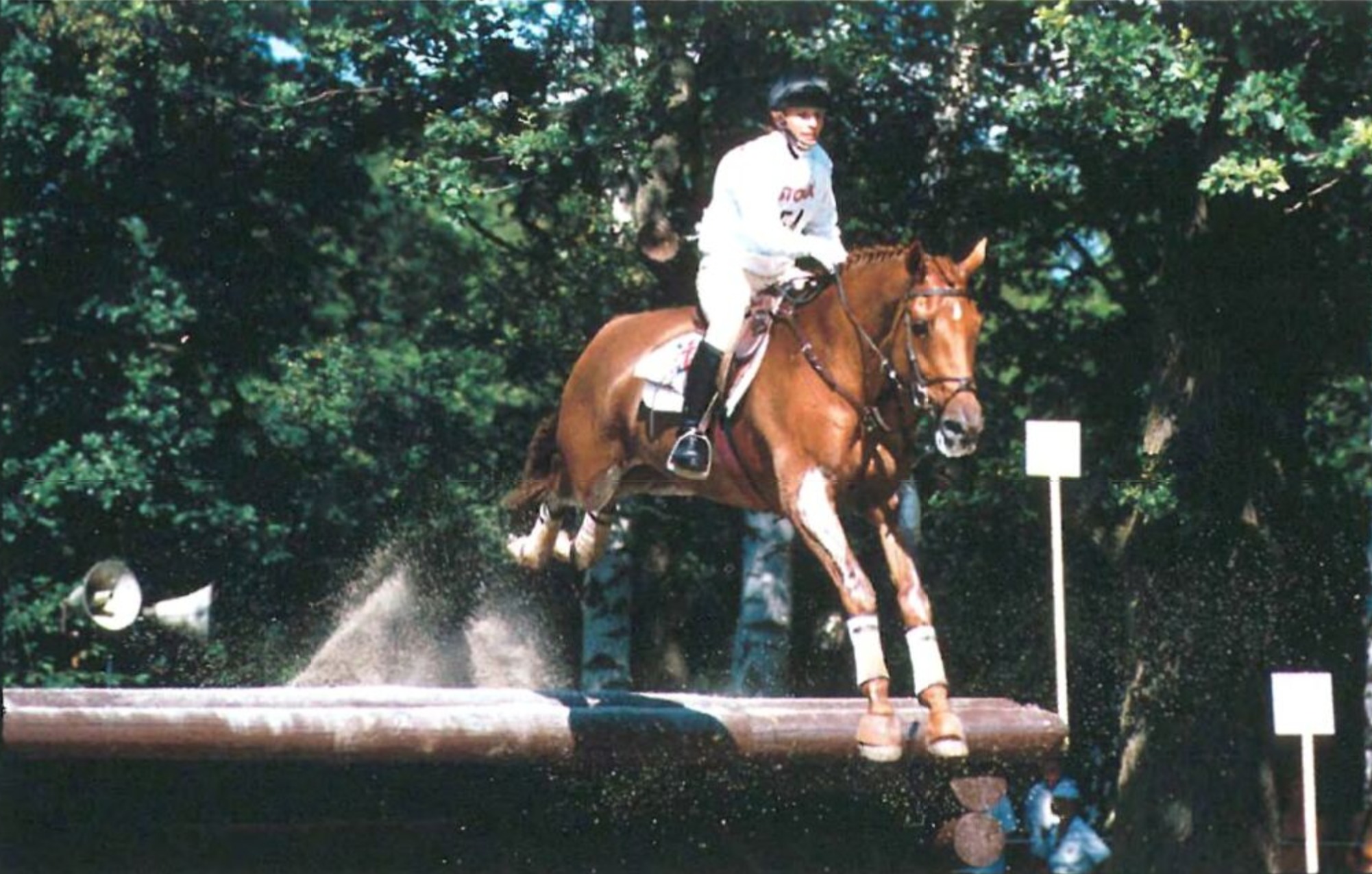
The Partnership Contract Between Horse and Rider
I look at it as a contract, a partnership contract between horse and rider. The best partnerships are when both partners agree to specific responsibilities according to their individual strengths. Cross-country riding is a serious business and a contract of this nature is what is needed. By thinking of it as a contract, it encourages you to take your responsibilities seriously and to recognize that the horse has separate responsibilities.
The Horse’s Responsibilities
The rider must sign up to a contract that gives physical responsibility for actually jumping the fence to the horse. Who could argue with this? But still, you see riders acting as though it was their own legs that were on the ground, throwing their bodies around and making strenuous pulls on the reins.
In addition, the rider must agree to something much more difficult. The rider must agree to train and allow the horse to look at and assess what they are about to jump, and allow them to make decisions about the size and type of effort needed, and the take-off point. Too many riders try to take these responsibilities away from the horse and as a consequence substantially reduce their potential, or worse, make cross-country riding dangerous.
The Rider’s Responsibilities
The first requirement for the rider is to put their horse ‘in gear’. You are not safe going across the country unless your horse is in gear and taking you willingly forward to the fence. Putting the horse in gear is another way of creating controlled impulsion. This emphasizes that the basis for a horse being in gear is good dressage.
The rider’s responsibility, having ensured the horse is in gear, is simply to provide the right direction and the right speed with a few small alterations to the level of impulsion. Try it out for yourself and you will find it works.
However the difficult part of this contract is that the horse must be sufficiently obedient to allow the rider to decide on the right direction, speed, and level of impulsion, and if they won’t sign up to this then they shouldn’t be going cross-country in competition. Instead, the horse and rider need to take a few steps back toward easier exercises.
Having the horse in gear with the right direction and speed are also priorities when riding a dressage test or show jumping. By having one structure for all three activities—dressage, show jumping, and cross-country—it helps you to act confidently and consistently and keeps it simple and understandable for your horse. However, there is an even more wonderful advantage for this strategy; it works at all levels. Even if you were going around Badminton, this strategy would still strengthen the foundation for your round.
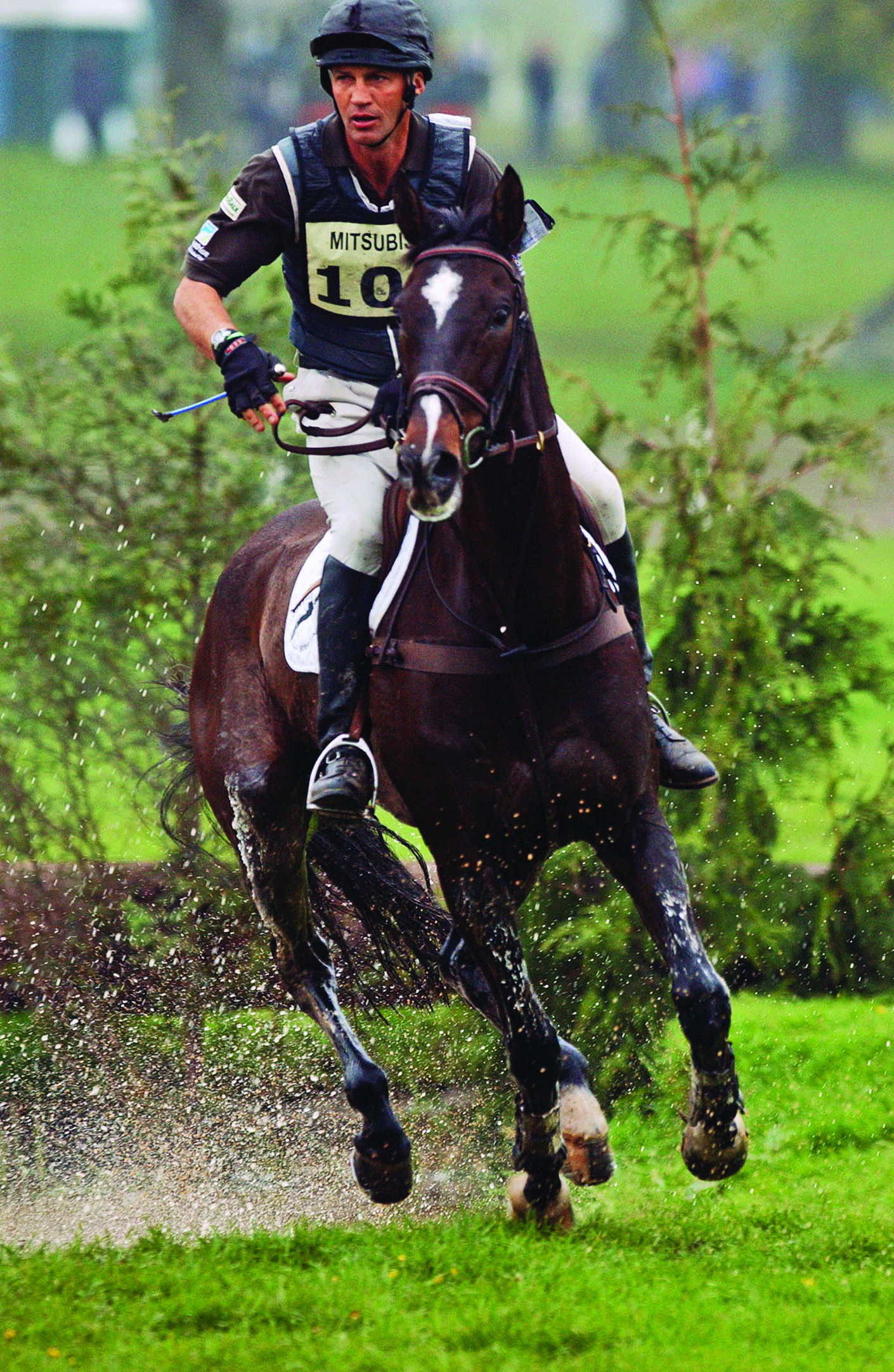
Putting Your Horse ‘In Gear’
A runaway horse is not ‘in gear’ because it is freewheeling out of control and a danger to the rider and themselves. To be in gear there has to be sufficient calmness and acceptance, as well as a willingness to go forward and connection through the back to give true impulsion.
A cross-country horse needs impulsion just the same as a dressage or show jumping horse. Therefore the horse learns most of the ingredients for being in gear in the basic training and not by doing cross-country. Unfortunately, many horses lose their calmness when galloping across the country and the resulting tension immediately inhibits the impulsion. To have a horse 100 percent in gear but not lose the calmness is the greatest challenge in training him for cross-country. It’s a case of slow and steady wins the race.
Apart from runaway horses, the most common elements missing for a horse to be 'in gear' are lack of response to the legs and a lack of enthusiasm to go forwards. The first step is to check they are in good health and not in pain. Then work them in company with other horses, slow cantering through fields and woods, while also improving balance and harmony in your position. Also ensure you ride using clear, enthusiastic communication rather than strength. Of course, making the exercises easier is essential.
Remember, there is also a genetic and mental component at work, which is why so many Irish horses are good at cross-country. Pure physical talent should not lead riders astray when the right mental qualities are in short supply.
Seeing A Stride
Knowing what stride the horse is on is important and very small changes can be helpful. But be careful not to distract the horse while approaching the fence by making big changes to his stride length in the last moments. Instead, encourage your horse to take some of the responsibility for altering his stride if required. It is remarkable how much a horse will do for you if allowed.
On the contrary, a horse may actually hit fences if, in their efforts to get the ‘right’ take-off point, the rider makes sudden changes to the speed and their own weight just before that fence. This invariably has a negative result and ends up with the horse chipping in a very short stride before take-off and getting too close to the fence.
Increasingly, many fences on cross-country courses require a show jumping speed. It would be silly to be unaware of what stride the horse is on and work with that. Working with a horse’s stride initially means making it easier for him to take off slightly further from the fence or slightly closer to it by having sufficient impulsion and keeping a consistent positional balance.
Over a period of time, a rider’s eye can be developed if the right exercises are used consistently. Then it becomes less obtrusive to make minor alterations in an effort to ensure a take-off point that is both more consistent and easier. The subtlety of these alterations is such that the horse will not feel that the partnership contract is broken. Instead, the horse will actively participate in this process.
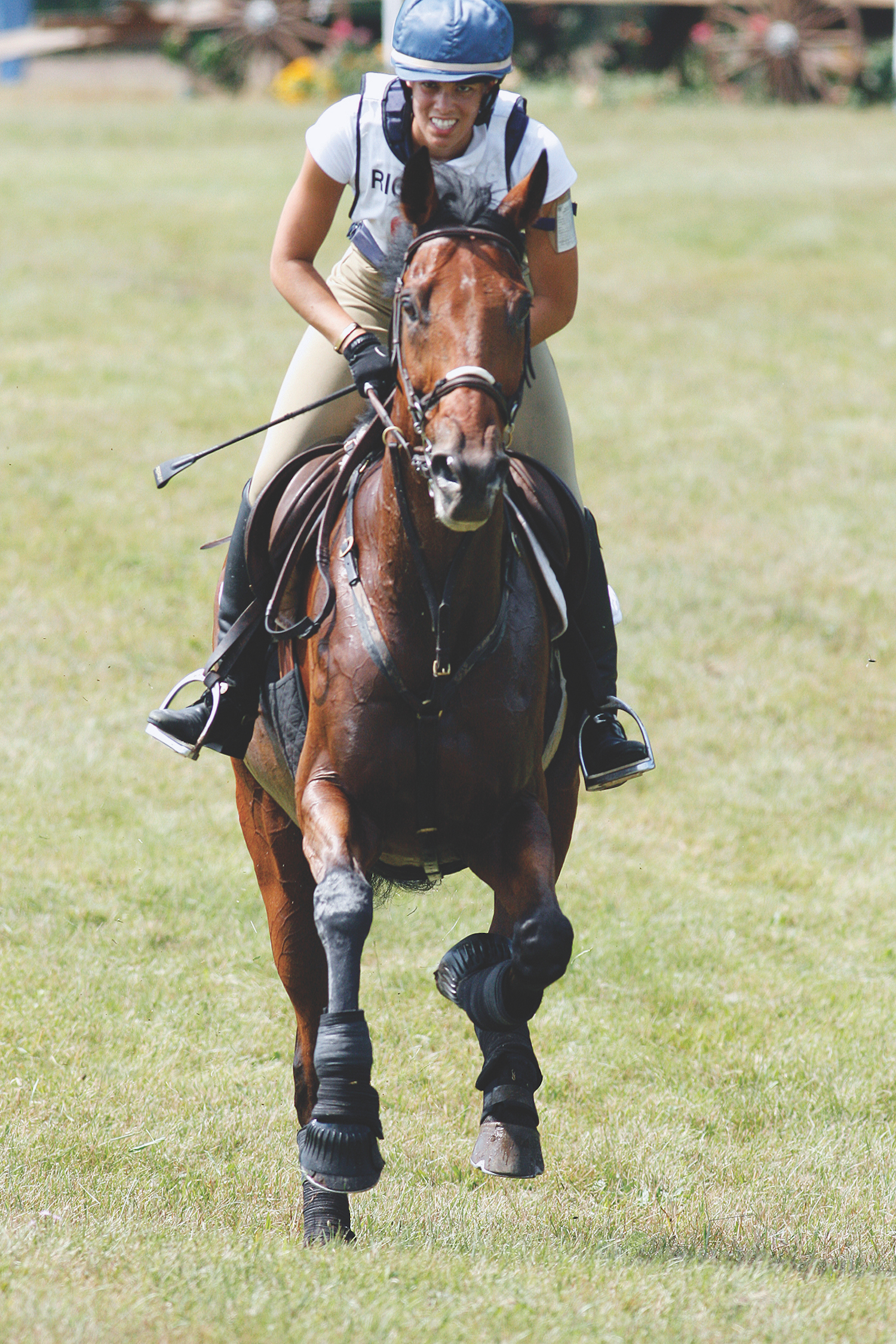
Going Faster
Working on a horse’s basic jump technique is vital. There is little point going faster over fences until he has learned to take off using both hind legs together, to use his shoulders and elbows by bringing them forward, and to stay straight.
If you have established a method of show jumping that produces a consistent stride length before and after the fence—and you have a consistent balance with a good lower leg position, which puts the stirrup leathers parallel to the girth—you will already have a good basis for going faster safely.
However, the major difference between show jumping and cross-country riders is the range of speeds and stride lengths a cross-country rider has to cope with. For example, slower speeds are required for drop fences, but it is the ability to jump safely at faster speeds that really defines cross-country riding.
Remember that the speeds required for the whole course at each level are average speeds. You will have to ride large sections of the cross-country at a speed 100 meters per minute faster than this average speed to allow for slower paces at certain fences and slower parts of the course. Work up to this faster speed progressively. Don’t worry about time faults initially. As long as your horse is in gear, it’s always safer to take the time you both need, rather than risk going faster than you and your horse are ready for. The faster you go, the less room there is for error. Going faster will also reduce the height that a horse is able to achieve because of the vertical forces of the gallop. So I’ll reiterate: Increase your speed gradually.
The vast majority of horses respect cross-country fences and occasionally give them an occasional small rub or tap. But this will not be the case if you go too fast or if they are tired. Speed over fences requires preparatory dressage and show jumping work, and also a fit horse. If your horse gets tired, there is one answer: pull up and come back another day with a fitter horse.
Interestingly enough, the ability to jump at speed will also avoid wasting energy. Like a car, nothing uses up energy more quickly than constant starting and stopping and hard acceleration.
Take-Off and Landing Points
The major aspect of more speed is the take-off and landing points. As your speed increases, the ideal take-off point is a little further away from the jump and with a symmetrical arch and you will also land a little further away on the other side. At 500 meters per minute, it is normal to take off approximately 2.5 meters away from the highest point of the fence, rather than 1.8 meters away as in show jumping. At 600 meters per minute, this will increase to approximately 3 meters away. For safety reasons, this has to be put into the equation when measuring distances and calculating the number of strides between fences.
A well-trained horse with extra scope will be able to either find an acceptable take-off point without changing the stride or else chip in a slightly short stride. There is no requirement to lengthen the stride so the rider just has to remember to sit still and be as consistent as possible and make only small changes as appropriate. In practice, good horses will rarely have to cope with one very short stride before take-off because they will realize what they have to do two or three strides before the fence and make some of the adjustment before the final stride.
The major advantage of this method is that if you are unsure of the stride, you can just sit still and be fairly confident that your horse will be able to cope. On the other hand, if you suddenly ask for a lengthened stride to find a good take-off point, your horse will become less likely to add another short stride when appropriate. So, avoid distracting the horse and overriding in front of the fence. This same strategy is the golden key to jumping all cross-country fences. Once you understand the logic of this and put it into practice, you will find that you gain more and more confidence. You will then become increasingly more aware of the stride you and your horse are on and have the ability to work to the horse’s benefit by making only the smallest of changes.

Case History
Desi was Sarah’s first competitive horse. He was a 15.2 hand bay gelding with huge feet and a huge heart. He tried to be ‘in gear’ so much that he often ended up out of control. His tendency to lift his tongue over the bit made control nearly impossible.
Although he loved cross-country, he needed to go back to work in the arena and go on long slow hacks to calm him and allow him to accept the bit quietly. Progress was slow and Sarah was very patient. Gradually her horse allowed her to be in control of direction and speed and they became a real partnership.
Two years later at the Young Rider European Championships at Rotherfield Park, they went first for the Irish team across the country. No pair before them had returned without jumping faults and everyone was worried. Nevertheless, Desi and Sarah galloped round the course faultlessly and fluently, without frequent changes of speed over the single fences. They finished safely and smiling in fourth place individually that day making all the slow steady work worthwhile.
About William Micklem
Growing up in a family of horsemen in Cornwall, England, William Micklem and his five siblings spent their childhood competing in Pony Club activities and hunting with the Fourburrow Hunt. After passing his British Horse Society Instructors Certificate (BHSI) in 1973, William went to work as chief instructor for Robert Hall in both Fulmer, England, and Pepperell, U.S., which is when he began a lifetime equestrian association with Karen O’Connor, before coming to Ireland to work for Bord na gCapall (The Irish Horse Board) in 1976. He also started training the Irish Junior and Young Rider Horse Trials Teams and designed Ireland’s renowned Golden Saddle Scheme for top young competition riders from dressage, show jumping, and horse trials. He passed his Fellowship of the British Horse Society in 1981. Micklem has found horses for some of the top riders in the world, including Biko, Custom Made, Giltedge, Mr. Maxwell, and Mandiba for the O’Connor Event Team. To find out more about William Micklem, visit his website at www.williammicklem.com.


